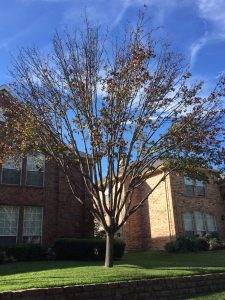 Cotton Root Rot in plants is a devastating fungal disease. What is cotton root rot? It can be called Cotton Root Rot (CRR), Texas Root Rot, Phymatotrichum Root Rot, or Ozonium Root Rot, they are all the same thing. For susceptible plants, it can be a death sentence. CRR is a soil born fungus that attacks root systems of plants. It likes clay soils with lots of lime and pH between 7.0 and 8.5. When soil temperatures are above 82 degrees CRR is active. This makes the CRR pathogen’s range from Louisiana to California and most of Mexico. Bottom line is that North Texas is in the middle of it.
Cotton Root Rot in plants is a devastating fungal disease. What is cotton root rot? It can be called Cotton Root Rot (CRR), Texas Root Rot, Phymatotrichum Root Rot, or Ozonium Root Rot, they are all the same thing. For susceptible plants, it can be a death sentence. CRR is a soil born fungus that attacks root systems of plants. It likes clay soils with lots of lime and pH between 7.0 and 8.5. When soil temperatures are above 82 degrees CRR is active. This makes the CRR pathogen’s range from Louisiana to California and most of Mexico. Bottom line is that North Texas is in the middle of it.
CRR is the only thing I know (outside of chainsaws and herbicides) that will kill a healthy plant in less than a week. It starts with a slight yellowing or bronzing of the leaves. Top leaves wilt within 24 to 48 hours after bronzing, followed by wilting of the bottom leaves within 72 hours. Permanent wilting by the third day, followed by death. Even though the plant is dead the leaves will remain firmly attached. My neighbor lost a healthy 18-year old (estimate) and very well maintained Bradford Pear to CRR in less than 7 days.
As destructive as CRR is, there is good news for the folks in agriculture. There are new planting techniques and products that can fight this fungus. The bad news for us homeowners is that these techniques and products are designed for acres of crops not a house with two trees. So what is a homeowner to do? If you have a plant that has been attacked by CRR, remove it. It’s that simple. To keep your CRR heartache at a minimum plant CRR resistant plants. At the bottom of the page, you will find sections on large and small trees, shrubs and ornamental plants that are CRR Resistant Plants.





